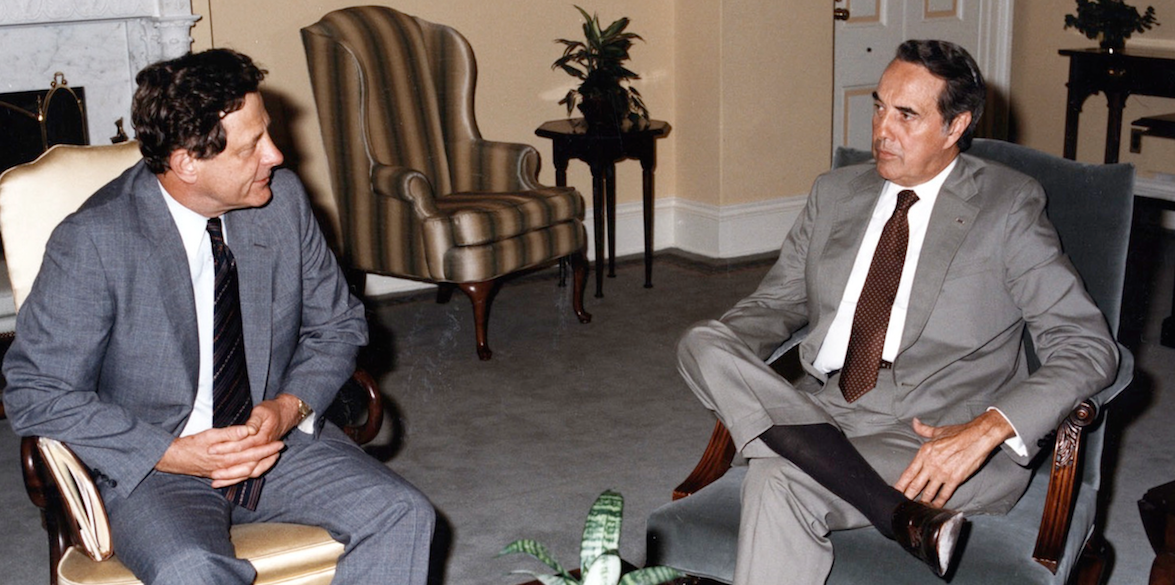Patents and the Cancer Moonshot: How Subject Matter Eligibility Affects Research
When standard cancer treatments fail, some doctors are turning to the developing field of immunotherapy. Immunotherapy involves treatments that use the patient’s own immune system to combat cancer. Both pharmaceutical companies and the federal government see the promise in funding research in this innovative field. However, R&D in cancer treatments is a time-intensive process, and it takes months, if not years, before doctors can bring cutting-edge research to their patients.
In January 2016, President Barack Obama called for the Cancer Moonshot to double the rate of progress in cancer research. Vice President Joe Biden traveled across the country and the world (including to Rice University) to collect information on current barriers in cancer research, like inefficiencies in the patent process. However, is the lengthy patent examination process truly what is slowing cancer research?
Accelerating the Process with “Patents 4 Patients”
To help accelerate cancer research, the United States Patent and Trademark Office launched the Cancer Immunotherapy Pilot Program (also known as “Patents 4 Patients”) in July 2016. This program aims to fast track the review of patents that involve treating cancer using immunotherapy.
Usually, the USPTO examines patents in order of their U.S. filing dates. However, under “Patents 4 Patients,” the Patent Office will grant special status to patent applications relating to cancer immunotherapy. The USPTO aims to finish examining petitions submitted before June 29, 2017 within twelve months of granting special status.
Often, USPTO examination takes a long time. Over the last two years, first office action pendency, or how long it takes to mail a First Office Action after a patent application is filed, takes an average of 16.5 months. Additionally, traditional total pendency, or how long it takes to decide whether to issue or abandon a patent, takes an average of 26.4 months. The new Pilot Program certainly has the potential to reduce these wait times. However, long patent examination periods are not the only barriers that researchers face when developing cancer treatments.
Patent Subject Matter Eligibility: A Look at Section 101
Under Section 101 of Title 35 of the United States Code, “any new and useful process, machine, manufacture, or composition of matter, or any new and useful improvement” is patent-eligible. Over the past few years, the U.S. Supreme Court has affected what is patentable. Under judicially recognized exceptions, laws of nature, natural phenomena and abstract ideas cannot be patented.
Most controversially, in Mayo v. Prometheus (2012), the Court held that correlations between blood test results and patient health were “laws of nature” and that any claims relating to these correlations were patent ineligible under 35 U.S.C. §101. Similarly, in AMP v. Myriad (2013), the Supreme Court held that claims relating to isolations of naturally occurring DNA cannot be patented.
Because of these decisions, the USPTO has rejected or abandoned many patents relating to cancer immunotherapy treatment on the basis that they claim laws of nature. According to Patently-O, patent rejections based on Section 101 objections increased substantially after the Mayo ruling from 15.9% of office actions to 86.1%.
For example, the USPTO has rejected patents relating to using gene expressions to predict chances of breast cancer (US20100035240A1) and using a specific protein as an early indicator of cancer (US20150072355A1) because they are applications of laws of nature. However, unlike the USPTO, the patent offices in Europe, Japan, and China have accepted these applications and granted their patents. Current U.S. patent law does not conform with internationally recognized forms of patent eligibility. Stifling the progress of research through patent rejections does not bode well for U.S. cancer patients. By refusing to protect emerging discoveries, the USPTO undermines cancer treatment research, especially in innovative fields like immunotherapy.
More Barriers with the FDA Approval Process
Even after a treatment is patented, it can take years to go through the phases of the clinical trial process. Phase I and II determine the safety and promise of a treatment. Phase III tests the effectiveness of the new treatment compared to existing standards. After successfully going through trials, companies file a New Drug Application (NDA) for Food and Drug Administration (FDA) approval.
According to DiMasi, Grabowski and Hansen (2016), clinical trials take an average of 9 years and 8 months. After a company submits an NDA, the FDA takes an average of 16 months to review it. This lengthy approval process further slows down R&D in cancer treatment.
Improving Subject Matter Eligibility Guidelines
Excludability in fast-growing fields like immunotherapy is extremely valuable in the early stages of R&D. Patents provide stability and a relative level of certainty, so a more quickly granted patent can help firms stake their claim in a developing treatment. However, the higher amount of claims rejections decreases the probability that companies will be able to protect their research. Questions about what is patent-eligible material could discourage investment and deprive researchers of necessary funding.
The Cancer Moonshot initiative is eager to make the patent process more efficient to quicken the progress of cancer treatment. While Patents 4 Patients could potentially help expedite research, long pendency periods are not the only barrier to accelerating research. Many discoveries are patentable, nonobvious applications of laws of nature. Yet, after recent court rulings, the USPTO still rejects their patent applications.
In late 2016, the USPTO held two roundtables to improve the its guidance for patent examiners on subject-matter eligibility. As judges and policymakers continue to define what can be patented, they must recognize the impact of their decisions on cancer treatment innovation.




